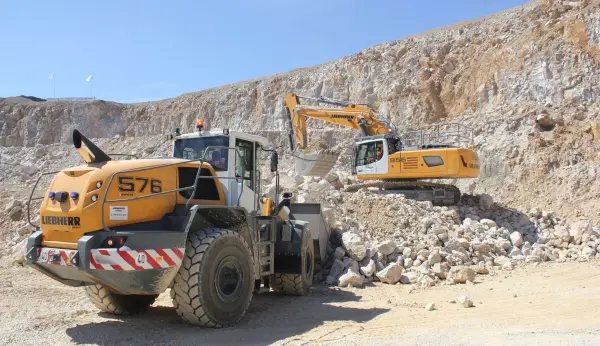MPA publishes new work-related stress guidance
New document aims to provide clear, simple, smart guidance for employers and mangers
THE Mineral Products Association (MPA) has published ‘Managing Work-Related Stress…A Guide to Risk Assessment’, which aims to provide clear, simple, smart guidance to employers and managers to help them complete a suitable and sufficient work-related stress risk assessment of their workplace.
Statistics published by Health and Safety Executive (HSE) show that 0.9 million workers suffered from work-related stress, depression or anxiety in 2022/23, accounting for 17.1 million working days lost*. Deloitte also reported that poor mental health, including stress, costs UK employers up to £56 billion a year**.
As well as a duty of care and a moral obligation, conducting a work-related stress risk assessment is a legal requirement and HSE inspectors are increasingly asking businesses what they are doing to comply with the law to minimize the risks of work-related stress.
Launched to coincide with Stress Awareness Month, this MPA guidance document describes the importance of carrying out an organizational-level risk assessment that addresses work-related stress. It also lays out the legal context and touches on the moral and financial cases for managing work-related stress and the practical steps that need to be taken during the risk-assessment process.
The guidance is based on the HSE’s ‘Stress Management Standards’ and includes templates and suggestions of control measures that organizations can adopt or adapt to manage work-related stress in each of the six main stressors identified in the ‘Management Standards’ – Demands, Change, Control, Relationships, Role, and Support. The guidance should enable organizations to follow the steps necessary to produce a suitable and sufficient risk assessment as well as an action plan of how control measures will be implemented. The main target audience is health and safety professionals and managers who may be required to carry out an organizational-level risk assessment.
Colin Mew, the MPA’s head of health and safety, said: ‘Risk assessment provides employers with a logical means to identify hazards, assess the likelihood of harm, and implement and track the effectiveness of control measures. In most cases, employers will need to record the findings of the risk assessment. A ‘suitable and sufficient’ risk assessment is a legal requirement and is fundamental to demonstrating compliance with the law.
‘Many organizations will already have implemented many effective control measures to tackle work-related stress and improve general well-being at work and it will be a relatively simple matter, using the templates in the guidance, to organize all of that work in the form of a suitable and sufficient risk assessment. Other employers may be starting from earlier in the process and will find numerous real-life examples of control measures from across the mineral products sector that they can adapt or adopt for their own unique circumstances.’
Lisa Saunders, chair of the MPA’s Mental Health and Well-being Working Group, said: ‘Managing work-related ill health, including mental health, is a moral duty, a legal duty, and just makes good business sense. The MPA Working Group is made up of experts who lead on this topic for their respective employers and represent a wide range of organizations from SMEs to global companies.
‘The guidance launched today addresses a significant issue that all employers face head-on and aims to give them ‘clear, simple, smart’ guidance on the risk-assessment process. No matter what point organizations have reached in terms of identifying and managing work-related stress, this guidance will be useful. By following this guidance and using the templates, links, and references, employers will be well equipped to manage work-related stress and improve the health of their workforce.’
The guidance can be accessed and downloaded from Safequarry.com by clicking here.
*Data taken from HSE ‘Health and Safety at Work summary statistics for GB 2023’
**Deloitte ‘Mental Health and Employers. The Case for Investment – Pandemic and Beyond, March 2022’










